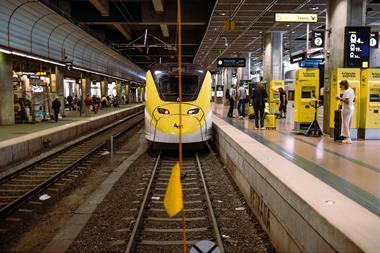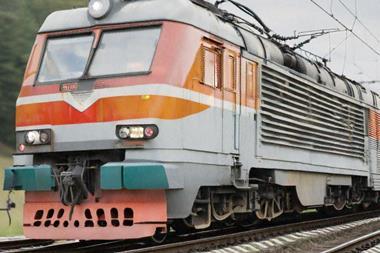The former head of the World Bank, now vice chairman of Global Infrastructure Partners, urged infrastructure investors to commit more capital to emerging markets. Joseph Mariathasan, who moderated a subsequent panel debate on the subject, reports
Over $40trn (€36trn) of investment in infrastructure is expected to be required in emerging markets between now and 2035, equivalent to $2.3trn per annum of spend, according to Jim Yong Kim.
The former president of the World Bank, who joined Global Infrastructure Partners as vice chairman this year, was speaking via a live video feed at the IPE Real Assets and Infrastructure Global Investor Conference in Brussels last week. Somewhat ironically, Kim was unable to speak in person due to a failure of transport infrastructure (his flight was cancelled), but digital infrastructure meant he could address the delegation of investors virtually.
Kim outlined the investment case for investment in emerging-markets infrastructure. Population and GDP growth combined with growing infrastructure demand, a need for operational expertise and a limited pool of domestic capital all point to significant investment opportunities.
Aviation is a case in point. Air travel in Asia-Pacific and Latin America is expected to account for 60% of global growth in air passenger journeys over the next 20 years. The two regions are also expected to account for 89% of global incremental power demand over the next 20 years.
It is not just aviation though. Demand for gas and liquefied natural gas (LNG) from emerging markets, for example, is expected to significantly increase over the next 20 years, surpassing developed markets.
These are all driving a boom in infrastructure investment opportunities across emerging markets, representing more than 60% of global demand.
Investing in infrastructure is the key to lifting countries and regions out of poverty. In 2018, Kim visited the third poorest province in China. “The airport was more efficient than many in the US,” he said. “They had power, transport and high-quality broadband internet access. Five years previously, 30% of the population was below the poverty threshold. This had dropped to 8%.”
What happened? The government set the objective of lowering the poverty rate and backed firms to establish infrastructure to do that. “Alibaba came in,” Kim said. “They created a tech village to help people to use the Alibaba platform. Secondly, they subsidised transport from the rural areas.”
The result was to give poor people access to the internet for their agricultural sales. The region became a major exporter of agricultural goods, such as gooseberries. “Lots of young people, as a result, are coming back to set up businesses, like exporting kiwi fruit across the globe,” said Kim. They were able to do this with the key infrastructure in place.
For a country to take part in e-commerce, Kim said, it needs three forms of infrastructure: broadband, energy access and transport. “In Rwanda and the Congo, 98% of infrastructure is paid for by the local governments. They don’t have room for investing more. Yet there is a need.”
Investing in areas such as toll roads in Senegal, a country with a low GDP per capita, could have been controversial. Some assumed it would worsen inequality and benefit only rich people who can afford to use them. In reality, entrepreneurs found it was good for business and they started using the toll roads for transport from the suburbs to the city centre. It benefitted everyone, reducing congestion on other roads.
As evidenced during a subsequent panel discussion on emerging-markets infrastructure, most institutional investors today have limited exposure today, particularly to infrastructure in sub-Saharan Africa.
As Tim Formuziewich, managing director of infrastructure at Investment Management Corporation of Ontario (IMCO), said, the “opportunity set shrinks” once you apply due-diligence filters of stable legal systems, certainty of property rights and political stability. IMCO, which was recently established to manage the investments of public institutions in Ontario, including the Ontario Pension Board, has yet to invest in sub-Saharan infrastructure.
But it is not only emerging markets that carry risks. As Formuziewich pointed out, the risk of nationalisation of assets has been far higher in developed markets than over the past couple of decades.
Moreover, said Kim, “in every country there is corruption, both in developed and in emerging markets”. He added: “Investors need to come in at the right level with the full knowledge of the government.”
The key to successful infrastructure investment in emerging markets is risk mitigation. This requires a combination of local knowledge, connectivity, policy insights, first-hand experience, project finance and export credit agencies, partial risk guarantees, development policy loans, and political risk insurance/credit enhancement.
For developed-market institutional investors, it makes sense politically and economically to set aside prejudices over emerging-market risks and invest more resources to identify investments that can help create stable, prosperous societies in emerging markets.












